RF & LiFi - Hybrid Network.
Abstract:
Diversified interest in the low-cost broadband satellite has overgrown to support a wide range of services in the satellite network. There is a need to explore alternativ...Show MoreMetadata
Abstract:
Diversified interest in the low-cost broadband satellite has overgrown to support a wide range of services in the satellite network. There is a need to explore alternative parts of optical communication towards Light Fidelity (LiFi) to offload the overcrowded radio frequency segments and improve the overall throughput. Ad hoc networks are the most suitable solution to provide a non-trivial challenge towards system design due to efficiency and quality of service (QoS). Both contention and congestion issues can severely affect the performance of a multicast network where video streaming becomes part of the day-to-day life. In this paper, we present network congestion characterization related to LiFi and High Throughput Satellite (HTS) under the Ka-band modulation schemes during adverse weather conditions in the tropical region. The heterogeneous network performance presented in this paper comprehensively provides systematic information for Satellite communication (SatCom) & LiFi and optimization of throughput by reducing network contention ratio. The measurement results have shown that when Deep Packet Inspection (DPI) policy is applied, an improvement of 80.26% in the packet delivery ratio is achieved as compared when without a DPI policy. However, using an on-premise Software-defined-wide access network (SD-WAN) alone provides 58.20% improvement in the overall network system. As a result, DPI provides a well managed QoS approach to manage the entire hybrid network, mainly in the tropical environment region.
RF & LiFi - Hybrid Network.
Published in: IEEE Access ( Volume: 8)
Funding Agency:
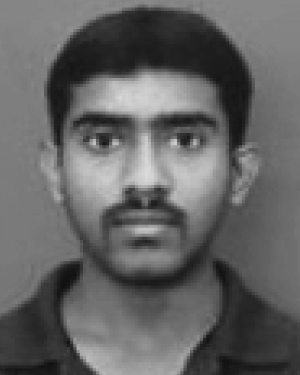
WiPNET Department of Computer and Communication Systems, Faculty of Engineering, Universiti Putra Malaysia (UPM), Serdang, Malaysia
P. M. Kalaivaanan (Graduate Student Member, IEEE) received the B.Eng. degree in communication engineering from University Malaysia Perlis, in 2007, and the master’s degree in engineering management from University Putra Malaysia (UPM), in 2016, where he is currently pursuing the Ph.D. degree in communication and network engineering. He is currently a Postdoctoral Researcher with the Faculty of Engineering, UPM. His main r...Show More
P. M. Kalaivaanan (Graduate Student Member, IEEE) received the B.Eng. degree in communication engineering from University Malaysia Perlis, in 2007, and the master’s degree in engineering management from University Putra Malaysia (UPM), in 2016, where he is currently pursuing the Ph.D. degree in communication and network engineering. He is currently a Postdoctoral Researcher with the Faculty of Engineering, UPM. His main r...View more
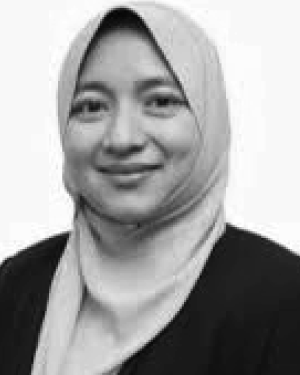
WiPNET Department of Computer and Communication Systems, Faculty of Engineering, Universiti Putra Malaysia (UPM), Serdang, Malaysia
Aduwati Sali (Senior Member, IEEE) received the B.Eng. degree in electrical electronics engineering (communications) from The University of Edinburgh, U.K., in 1999, the M.Sc. degree in communications and network engineering from Universiti Putra Malaysia (UPM), Malaysia, in April 2002, and the Ph.D. degree in mobile and satellite communications from the University of Surrey, U.K., in July 2009. She was the Deputy Directo...Show More
Aduwati Sali (Senior Member, IEEE) received the B.Eng. degree in electrical electronics engineering (communications) from The University of Edinburgh, U.K., in 1999, the M.Sc. degree in communications and network engineering from Universiti Putra Malaysia (UPM), Malaysia, in April 2002, and the Ph.D. degree in mobile and satellite communications from the University of Surrey, U.K., in July 2009. She was the Deputy Directo...View more
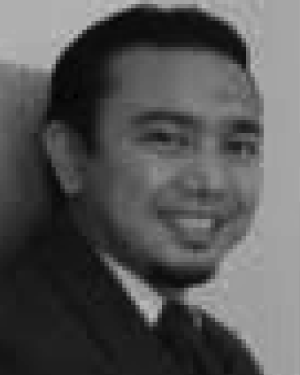
WiPNET Department of Computer and Communication Systems, Faculty of Engineering, Universiti Putra Malaysia (UPM), Serdang, Malaysia
Raja Syamsul Azmir Raja Abdullah (Senior Member, IEEE) received the B.Eng. degree in electronic and electrical engineering, the M.Sc. degree in communication system engineering, and the Ph.D. degree in radar and microwave system from the University of Birmingham, U.K., in 2000, 2001, and 2005, respectively. He has been involved in the development of hardware and software for radar sensors and wireless sensor networks (WSN...Show More
Raja Syamsul Azmir Raja Abdullah (Senior Member, IEEE) received the B.Eng. degree in electronic and electrical engineering, the M.Sc. degree in communication system engineering, and the Ph.D. degree in radar and microwave system from the University of Birmingham, U.K., in 2000, 2001, and 2005, respectively. He has been involved in the development of hardware and software for radar sensors and wireless sensor networks (WSN...View more

WiPNET Department of Computer and Communication Systems, Faculty of Engineering, Universiti Putra Malaysia (UPM), Serdang, Malaysia
Syamsuri Yaakob (Senior Member, IEEE) received the B.Eng. and M.Eng.Sc. degrees in electronic engineering from the Kin’s College London and Multimedia University (MMU), Cyberjaya, in 1998 and 2010, respectively, and the Ph.D. degree in millimetre-wave radio over fibre system from the Universiti Teknologi Malaysia (UTM), in 2014. He was a Satellite Engineer with Telekom Malaysia, in 1998, and a Senior Researcher with TM Re...Show More
Syamsuri Yaakob (Senior Member, IEEE) received the B.Eng. and M.Eng.Sc. degrees in electronic engineering from the Kin’s College London and Multimedia University (MMU), Cyberjaya, in 1998 and 2010, respectively, and the Ph.D. degree in millimetre-wave radio over fibre system from the Universiti Teknologi Malaysia (UTM), in 2014. He was a Satellite Engineer with Telekom Malaysia, in 1998, and a Senior Researcher with TM Re...View more
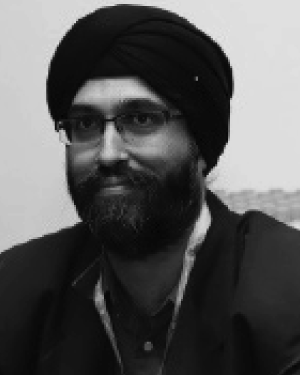
Department of Electrical, Electronic and Systems Engineering, Universiti Kebangsaan Malaysia (UKM), Bangi, Malaysia
Space Science Centre (ANGKASA), Institute of Climate Change, Universiti Kebangsaan Malaysia, Bangi, Malaysia
Mandeep Jit Singh (Member, IEEE) was born in Malaysia, in 1975. He is currently a Professor with the Department of Electrical, Electronic and Systems Engineering, Universiti Kebangsaan Malaysia (UKM). He is also a Visiting Professor with Covenant University, Nigeria. He is also the Advisor of the Engineering Education Technical Division (E2TD), Institute of Engineers, Malaysia. He is the author or coauthor of more than 24...Show More
Mandeep Jit Singh (Member, IEEE) was born in Malaysia, in 1975. He is currently a Professor with the Department of Electrical, Electronic and Systems Engineering, Universiti Kebangsaan Malaysia (UKM). He is also a Visiting Professor with Covenant University, Nigeria. He is also the Advisor of the Engineering Education Technical Division (E2TD), Institute of Engineers, Malaysia. He is the author or coauthor of more than 24...View more
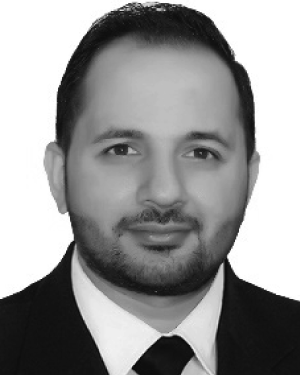
Computer Engineering Techniques, Al-Ma’moon University College, Baghdad, Iraq
Ali M. Al-Saegh (Member, IEEE) was born in Baghdad, Iraq, in April 1984. He received the B.Sc. degree in electronic and communications engineering from Nahrain University, Iraq, in 2005, the M.Sc. degree in satellite engineering from the Electronic and Communications Engineering Department, Nahrain University, in 2008, and the Ph.D. degree in wireless communications engineering from the Computer and Communication System E...Show More
Ali M. Al-Saegh (Member, IEEE) was born in Baghdad, Iraq, in April 1984. He received the B.Sc. degree in electronic and communications engineering from Nahrain University, Iraq, in 2005, the M.Sc. degree in satellite engineering from the Electronic and Communications Engineering Department, Nahrain University, in 2008, and the Ph.D. degree in wireless communications engineering from the Computer and Communication System E...View more

WiPNET Department of Computer and Communication Systems, Faculty of Engineering, Universiti Putra Malaysia (UPM), Serdang, Malaysia
P. M. Kalaivaanan (Graduate Student Member, IEEE) received the B.Eng. degree in communication engineering from University Malaysia Perlis, in 2007, and the master’s degree in engineering management from University Putra Malaysia (UPM), in 2016, where he is currently pursuing the Ph.D. degree in communication and network engineering. He is currently a Postdoctoral Researcher with the Faculty of Engineering, UPM. His main research interests include satellite communication and visible light communication (VLC).
P. M. Kalaivaanan (Graduate Student Member, IEEE) received the B.Eng. degree in communication engineering from University Malaysia Perlis, in 2007, and the master’s degree in engineering management from University Putra Malaysia (UPM), in 2016, where he is currently pursuing the Ph.D. degree in communication and network engineering. He is currently a Postdoctoral Researcher with the Faculty of Engineering, UPM. His main research interests include satellite communication and visible light communication (VLC).View more

WiPNET Department of Computer and Communication Systems, Faculty of Engineering, Universiti Putra Malaysia (UPM), Serdang, Malaysia
Aduwati Sali (Senior Member, IEEE) received the B.Eng. degree in electrical electronics engineering (communications) from The University of Edinburgh, U.K., in 1999, the M.Sc. degree in communications and network engineering from Universiti Putra Malaysia (UPM), Malaysia, in April 2002, and the Ph.D. degree in mobile and satellite communications from the University of Surrey, U.K., in July 2009. She was the Deputy Director of the UPM Research Management Centre (RMC), where she is responsible for research planning and knowledge management. From 1999 to 2000, she worked as an Assistant Manager with Telekom Malaysia Bhd. Since February 2019, she has been a Professor with the Department of Computer and Communication Systems, Faculty of Engineering, UPM. She is the Principal Investigator and Collaborator in projects under local and international funding bodies, namely, the Malaysian Ministry of Science, Technology and Innovation (MOSTI), the Malaysian Ministry of Higher Education (MoHE), the Malaysian Communications and Multimedia Commission (MCMC), the Research University Grant Scheme (RUGS) (now known as Putra Initiative Grant) UPM, the Academy of Sciences for the Developing World (TWAS-COMSTECH) Joint Grants, the EU Horizon 2020 Research and Innovation Staff Exchange (H2020-RISE), and the NICT Japan–ASEAN IVO. She provided consultation to the Malaysian Ministry of Information and Multimedia, Malaysian Ministry of Higher Education, National Space Agency (ANGKASA), ATSB Bhd, and Petronas Bhd. She was on projects related to mobile and satellite communications. Her research interests include radio resource management, MAC layer protocols, satellite communications, satellite-assisted emergency communications, the IoT systems for environmental monitoring, and 3D video transmission over wireless networks. In 2014, due to the fateful disappearance of MH370, she appeared in printed and broadcasting media, specifically Astro Awani, RTM, TV Al-Hijrah, BERNAMA, Harian Metro, and Metro Ahad, regarding the analysis of satellite communication in tracking the missing aircraft. She is involved with the IEEE as a Chairperson to ComSoc/VTS Malaysia, in 2017 and 2018, and the Young Professionals (YP), in 2015. She was the Chair of the Young Scientists Network-Academy of Sciences Malaysia (YSN-ASM), in 2018, and the Co-Chair for Science Policy, in 2017. She is also a Chartered Engineer (C.Eng.) registered under the U.K. Engineering Council and a Professional Engineer (P.Eng.) under the Board of Engineers Malaysia (BEM).
Aduwati Sali (Senior Member, IEEE) received the B.Eng. degree in electrical electronics engineering (communications) from The University of Edinburgh, U.K., in 1999, the M.Sc. degree in communications and network engineering from Universiti Putra Malaysia (UPM), Malaysia, in April 2002, and the Ph.D. degree in mobile and satellite communications from the University of Surrey, U.K., in July 2009. She was the Deputy Director of the UPM Research Management Centre (RMC), where she is responsible for research planning and knowledge management. From 1999 to 2000, she worked as an Assistant Manager with Telekom Malaysia Bhd. Since February 2019, she has been a Professor with the Department of Computer and Communication Systems, Faculty of Engineering, UPM. She is the Principal Investigator and Collaborator in projects under local and international funding bodies, namely, the Malaysian Ministry of Science, Technology and Innovation (MOSTI), the Malaysian Ministry of Higher Education (MoHE), the Malaysian Communications and Multimedia Commission (MCMC), the Research University Grant Scheme (RUGS) (now known as Putra Initiative Grant) UPM, the Academy of Sciences for the Developing World (TWAS-COMSTECH) Joint Grants, the EU Horizon 2020 Research and Innovation Staff Exchange (H2020-RISE), and the NICT Japan–ASEAN IVO. She provided consultation to the Malaysian Ministry of Information and Multimedia, Malaysian Ministry of Higher Education, National Space Agency (ANGKASA), ATSB Bhd, and Petronas Bhd. She was on projects related to mobile and satellite communications. Her research interests include radio resource management, MAC layer protocols, satellite communications, satellite-assisted emergency communications, the IoT systems for environmental monitoring, and 3D video transmission over wireless networks. In 2014, due to the fateful disappearance of MH370, she appeared in printed and broadcasting media, specifically Astro Awani, RTM, TV Al-Hijrah, BERNAMA, Harian Metro, and Metro Ahad, regarding the analysis of satellite communication in tracking the missing aircraft. She is involved with the IEEE as a Chairperson to ComSoc/VTS Malaysia, in 2017 and 2018, and the Young Professionals (YP), in 2015. She was the Chair of the Young Scientists Network-Academy of Sciences Malaysia (YSN-ASM), in 2018, and the Co-Chair for Science Policy, in 2017. She is also a Chartered Engineer (C.Eng.) registered under the U.K. Engineering Council and a Professional Engineer (P.Eng.) under the Board of Engineers Malaysia (BEM).View more

WiPNET Department of Computer and Communication Systems, Faculty of Engineering, Universiti Putra Malaysia (UPM), Serdang, Malaysia
Raja Syamsul Azmir Raja Abdullah (Senior Member, IEEE) received the B.Eng. degree in electronic and electrical engineering, the M.Sc. degree in communication system engineering, and the Ph.D. degree in radar and microwave system from the University of Birmingham, U.K., in 2000, 2001, and 2005, respectively. He has been involved in the development of hardware and software for radar sensors and wireless sensor networks (WSNs). He has contributed to the development of the advanced practical forward scattering radar (FSR) system. The system has been adopted for various applications, including civil, military, and medical. With the addition of an intelligent system, the advanced FSR system can automatically detect and classify most ground and air targets. Recent development focuses on the high-resolution radar network (RSN), which can be applied to small-object detection and classification. By adopting WSN advantages, the drawbacks of traditional radar can be compensated. Future radar will have the size of a computer mouse compared with the huge radar set mounted on towers at present. His research interests include microwave systems, radar systems, and wireless sensor networks. He is currently the IEEE Graduate of the last decade (Young Professional), Malaysia 2008. He is also a member of the IEEE Aerospace and Electronic System, Society. He is also an Executive Member of the IEEE graduate of the last decade, Malaysia 2007. He is also a member of the European Microwave Association 2007, the Malaysian Society for Engineering and Technology 2008, the International Association of Engineers (IAENG) 2008, and the Institution of Engineering and Technology (IET) 2002.
Raja Syamsul Azmir Raja Abdullah (Senior Member, IEEE) received the B.Eng. degree in electronic and electrical engineering, the M.Sc. degree in communication system engineering, and the Ph.D. degree in radar and microwave system from the University of Birmingham, U.K., in 2000, 2001, and 2005, respectively. He has been involved in the development of hardware and software for radar sensors and wireless sensor networks (WSNs). He has contributed to the development of the advanced practical forward scattering radar (FSR) system. The system has been adopted for various applications, including civil, military, and medical. With the addition of an intelligent system, the advanced FSR system can automatically detect and classify most ground and air targets. Recent development focuses on the high-resolution radar network (RSN), which can be applied to small-object detection and classification. By adopting WSN advantages, the drawbacks of traditional radar can be compensated. Future radar will have the size of a computer mouse compared with the huge radar set mounted on towers at present. His research interests include microwave systems, radar systems, and wireless sensor networks. He is currently the IEEE Graduate of the last decade (Young Professional), Malaysia 2008. He is also a member of the IEEE Aerospace and Electronic System, Society. He is also an Executive Member of the IEEE graduate of the last decade, Malaysia 2007. He is also a member of the European Microwave Association 2007, the Malaysian Society for Engineering and Technology 2008, the International Association of Engineers (IAENG) 2008, and the Institution of Engineering and Technology (IET) 2002.View more

WiPNET Department of Computer and Communication Systems, Faculty of Engineering, Universiti Putra Malaysia (UPM), Serdang, Malaysia
Syamsuri Yaakob (Senior Member, IEEE) received the B.Eng. and M.Eng.Sc. degrees in electronic engineering from the Kin’s College London and Multimedia University (MMU), Cyberjaya, in 1998 and 2010, respectively, and the Ph.D. degree in millimetre-wave radio over fibre system from the Universiti Teknologi Malaysia (UTM), in 2014. He was a Satellite Engineer with Telekom Malaysia, in 1998, and a Senior Researcher with TM Research and Development Sdn. Bhd. (TMR&D), in 2004. He is currently an Associate Professor with the Department of Computer and Communication Systems Engineering, Faculty of Engineering, Universiti Putra Malaysia (UPM). His current research interests include millimetre-wave radio over fibre systems, passive optical networks, optical communication systems, and access network technologies.
Syamsuri Yaakob (Senior Member, IEEE) received the B.Eng. and M.Eng.Sc. degrees in electronic engineering from the Kin’s College London and Multimedia University (MMU), Cyberjaya, in 1998 and 2010, respectively, and the Ph.D. degree in millimetre-wave radio over fibre system from the Universiti Teknologi Malaysia (UTM), in 2014. He was a Satellite Engineer with Telekom Malaysia, in 1998, and a Senior Researcher with TM Research and Development Sdn. Bhd. (TMR&D), in 2004. He is currently an Associate Professor with the Department of Computer and Communication Systems Engineering, Faculty of Engineering, Universiti Putra Malaysia (UPM). His current research interests include millimetre-wave radio over fibre systems, passive optical networks, optical communication systems, and access network technologies.View more

Department of Electrical, Electronic and Systems Engineering, Universiti Kebangsaan Malaysia (UKM), Bangi, Malaysia
Space Science Centre (ANGKASA), Institute of Climate Change, Universiti Kebangsaan Malaysia, Bangi, Malaysia
Mandeep Jit Singh (Member, IEEE) was born in Malaysia, in 1975. He is currently a Professor with the Department of Electrical, Electronic and Systems Engineering, Universiti Kebangsaan Malaysia (UKM). He is also a Visiting Professor with Covenant University, Nigeria. He is also the Advisor of the Engineering Education Technical Division (E2TD), Institute of Engineers, Malaysia. He is the author or coauthor of more than 240 research articles in antenna and microwave RF. His publications have been cited 959 times, and his H-index is 15. His research interests include communication antenna design, radio wave propagation, satellite antennas, and the IoT. He was a recipient of more than 40 research grants (national and international). He received several international and national medal awards for his research and innovation. He also serves as the Editor-in-Chief for the Greener Journal of Electronics and the Communication and an Associate Editor for the Journal of Electrical and Computer Engineering, Hindawi.
Mandeep Jit Singh (Member, IEEE) was born in Malaysia, in 1975. He is currently a Professor with the Department of Electrical, Electronic and Systems Engineering, Universiti Kebangsaan Malaysia (UKM). He is also a Visiting Professor with Covenant University, Nigeria. He is also the Advisor of the Engineering Education Technical Division (E2TD), Institute of Engineers, Malaysia. He is the author or coauthor of more than 240 research articles in antenna and microwave RF. His publications have been cited 959 times, and his H-index is 15. His research interests include communication antenna design, radio wave propagation, satellite antennas, and the IoT. He was a recipient of more than 40 research grants (national and international). He received several international and national medal awards for his research and innovation. He also serves as the Editor-in-Chief for the Greener Journal of Electronics and the Communication and an Associate Editor for the Journal of Electrical and Computer Engineering, Hindawi.View more

Computer Engineering Techniques, Al-Ma’moon University College, Baghdad, Iraq
Ali M. Al-Saegh (Member, IEEE) was born in Baghdad, Iraq, in April 1984. He received the B.Sc. degree in electronic and communications engineering from Nahrain University, Iraq, in 2005, the M.Sc. degree in satellite engineering from the Electronic and Communications Engineering Department, Nahrain University, in 2008, and the Ph.D. degree in wireless communications engineering from the Computer and Communication System Engineering Department, Universiti Putra Malaysia (UPM), Selangor, Malaysia, in 2015. From 2009 to 2012, he was a Lecturer with the Computer Engineering Techniques and Communications Engineering Departments, Al-Ma’moon University College, Iraq. From 2012 to 2013, he worked as a Research Assistant with the Department of Computer and Communication Systems Engineering, UPM. Since 2015, he has been a Senior Lecturer with the Computer Engineering Techniques Department, Al- Ma’moon University College. His research interests include radiowave propagation, satellite communications, atmospheric impairment prediction, channel modeling, multimedia transmission, and resource management. He is a member of several groups and associations, including the Satellite Communications Group, UPM, Iraqi Engineering and Academic Associations, and several IEEE societies and communities.
Ali M. Al-Saegh (Member, IEEE) was born in Baghdad, Iraq, in April 1984. He received the B.Sc. degree in electronic and communications engineering from Nahrain University, Iraq, in 2005, the M.Sc. degree in satellite engineering from the Electronic and Communications Engineering Department, Nahrain University, in 2008, and the Ph.D. degree in wireless communications engineering from the Computer and Communication System Engineering Department, Universiti Putra Malaysia (UPM), Selangor, Malaysia, in 2015. From 2009 to 2012, he was a Lecturer with the Computer Engineering Techniques and Communications Engineering Departments, Al-Ma’moon University College, Iraq. From 2012 to 2013, he worked as a Research Assistant with the Department of Computer and Communication Systems Engineering, UPM. Since 2015, he has been a Senior Lecturer with the Computer Engineering Techniques Department, Al- Ma’moon University College. His research interests include radiowave propagation, satellite communications, atmospheric impairment prediction, channel modeling, multimedia transmission, and resource management. He is a member of several groups and associations, including the Satellite Communications Group, UPM, Iraqi Engineering and Academic Associations, and several IEEE societies and communities.View more

